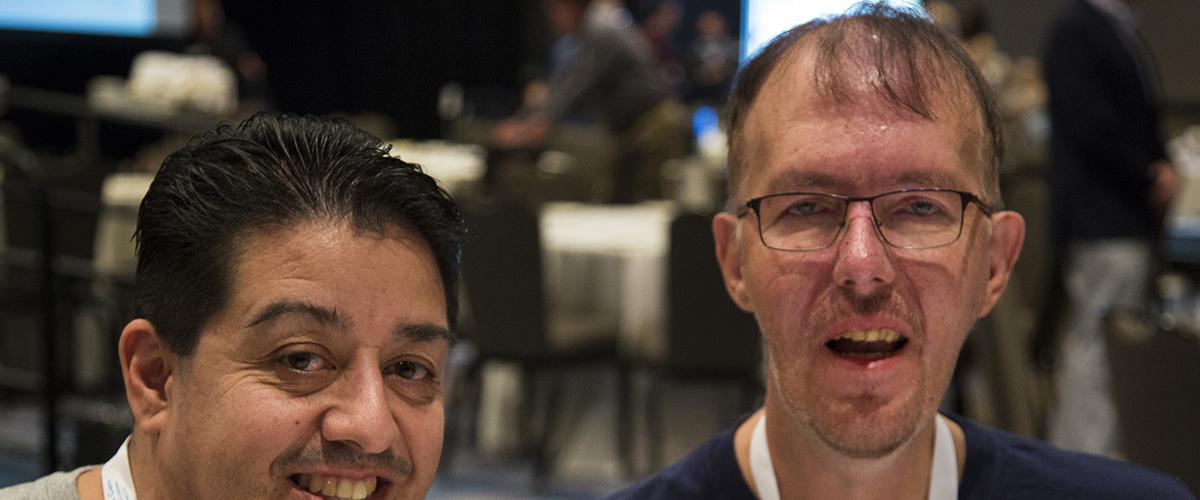What is the Stanford Biobank?
The Stanford Myotonic Dystrophy Biobank is a collection of biological samples from donors for scientific research. The Biobank stores samples such as blood, muscle, skin, spinal fluid, and other clinical specimens. The Biobank collects tissues from people with myotonic dystrophy, related neurological disorders, and unaffected family members. Samples can be collected with your consent during routine clinic visits, during scheduled surgical procedures, or after death with your family's consent. The Biobank then organizes and stores these samples so that they can be shared with scientists throughout the world for research. These samples are tremendously valuable in helping determine how myotonic dystrophy affects the body, which will in turn help develop meaningful treatments. This resource facilitates the involvement of subjects with myotonic dystrophy to assure researchers have access to necessary samples.
How do I enroll?
Enrollment in the Stanford Myotonic Dystrophy Biobank is relatively easy, and requires you to fill out two forms. The first form is the Intended Donor Information Form containing your personal information, and contact information for your next-of-kin and primary healthcare provider. The second form is the Research Consent Form which allows you to formally state your intent to allow the Stanford Neuromuscular Program to collect your tissue samples for research purposes. Individuals who intend to have their remains donated through an autopsy after their death should include information about their funeral home on the Intended Donor Information Form; the mortician can be very helpful in facilitating an autopsy. The Research Consent Form contains both your signature, and the signature of your next-of-kin, which will help assure your family of your intent. For an autopsy to occur, however, a consent form from the institution performing the autopsy will need to be signed by the next of kin after death. The Biobank recommends that you make several copies of these signed forms and store them in your personal records. You should also give copies to your family, next-of-kin, primary healthcare provider, and designated funeral home. The Biobank team also recommends that you include your Research Consent Form in any medical directive, will or living will. You should mail Stanford the original copies of both forms. If any of the contact information changes, Stanford asks that you update them by emailing or calling the non-emergency contact information below.
How will my donated sample be used?
The donated samples will be stored at Stanford for future research. Qualified researchers who require samples will apply to the Biobank, submitting a description of their research project and proof of institutional approval. Samples given to researchers will have all personal identifying information about the donor removed, and will simply include information about the medical condition of the donor (see privacy question below for more information). Stanford will not be able to provide families with information about where or how individual donor specimens are used, but is happy to provide general information about projects and publications that have used Biobank samples.
What are the benefits of enrolling?
Myotonic dystrophy is relatively uncommon, so researchers have difficulty procuring the samples they need for investigations. By donating to the Stanford Myotonic Dystrophy Biobank, you will help researchers make scientific discoveries that may ultimately benefit individuals with the condition that affects you and your family. The Biobank research team will take care of all arrangements, and any costs of donation, once you have notified them.
How will my privacy be protected?
All identifying information recorded in the Intended Donor Information Form and Research Consent Form will be stored at Stanford and not released to any other researchers. When samples arrive at the Biobank, they are labeled with a unique identifying number. The Biobank team will ask for specific medical information that will be associated with the specimens, but only Dr. Day and his direct team will have access to the identifying information linked to the unique ID number. Samples shared with researchers will only have the ID number, description of the type of sample/tissue, and characterization of the donor's condition. If at any time you no longer wish to be enrolled in the Biobank, you can contact the Biobank by email or phone and your information and samples will be immediately removed from the Biobank system.
How do I donate?
If you are scheduled for a procedure you believe may produce samples for donation, you can email or phone the non-emergency Biobank contact below to make arrangements for specimen collection. If you are the next-of-kin, primary healthcare provider, or funeral home representing a person enrolled in the Stanford DM Biobank for autopsy donation and you believe death is imminent, contact one of the Biobank staff members listed below. A single phone call is typically all you will need to make; the Biobank team will take care of the rest of the arrangements. After the family member’s death, the next of kin will have to provide consent for the autopsy at the institution providing that service. The autopsy is performed as soon after death as possible, usually within 24 hours. After the autopsy is completed, the remains are returned to the mortician. Care is taken throughout the procedure to preserve normal appearance, so that there is no restriction on the type of memorial service available to the family.
Who can I contact for more information?
If you have questions, contact the Biobank team using the information below.
Contact Email: stanfordbiobank@lists.stanford.edu
Biobank enrollment: (650) 497-9807
Dr. Day’s Lab: (650) 723-9574
For urgent matters you may call:
Katharine Hagerman, PhD
Lab: (650) 723-9574
Shirley Paulose, MS
Office: (650) 724-3792
John W. Day, MD, PhD
Office: (650) 725-7622
05/16/2014

